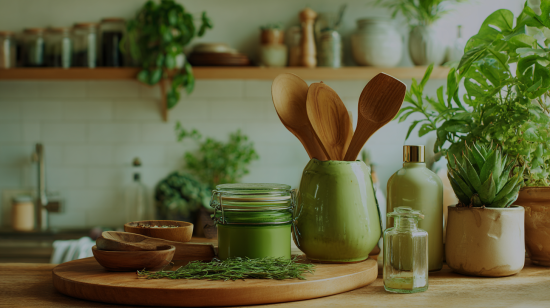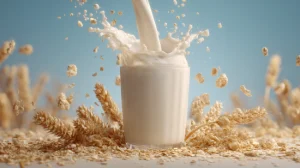
bettergoods Plant-Based Unsweetened Original Almond milk, Half Gallon
- bettergoods Plant-Based Unsweetened Original Almond milk, Half Gallon
- Smooth and delicious
- Perfect for savoring your morning coffee, enjoying a relaxing afternoon tea, or whipping up a culinary masterpiece
- Rich in calcium
- A good source of vitamins D and A
- Plant-based recipe
- 8 servings per container
$2.63

bettergoods Plant-Based Chick’n Nuggets, 10.5 oz (Frozen)
- bettergoods Plant-Based Chick’n Nuggets, 10.5 oz (Frozen)
- Tender and succulent breaded crispy nuggets
- Plant-powered delight crafted from premium soy protein
- Guilt-free, flavorful twist on the classic chicken experience
- 11 g of protein per serving
- 3.5 servings per container
- Oven ready in 10-12 minutes
- Microwave ready in 60 seconds
$3.42

bettergoods Plant-Based Salted Caramel Oat milk Non-Dairy Frozen Dessert, 16 fl oz
- bettergoods Plant-Based Salted Caramel Oat milk Non-Dairy Frozen Dessert, 16 fl oz
- A delightful combination of sweet caramel and a touch of sea salt swirled into creamy oat milk
- Vegan friendly, dairy-free and gluten-free
- Flavored with other natural flavors
- Pint-sized packaging makes it easy to store in the freezer
- 3 servings per container
$3.62

bettergoods Plant-based 55% Oat Chocolate Bar with Tart Cherries and Pistachios, 3.5 oz
- bettergoods Plant-based 55% Oat Chocolate Bar with Tart Cherries and Pistachios, 3.5 oz
- 55% cocoa oat chocolate mixed with crunchy roasted pistachios and tart dried cherries
- Crafted in Switzerland using sustainably sourced cocoa beans from Ghana
- Fair trade certified
- Bean to bar process
- 3.5 servings per bar
- 170 calories per serving
$3.44

bettergoods Plant-Based Chocolate Almond milk, Half Gallon
- bettergoods Plant-Based Almond Chocolate, Half Gallon
- Smooth and creamy plant-based almond chocolate
- Perfect for savoring your morning coffee, enjoying a relaxing afternoon tea, or whipping up a culinary masterpiece
- Rich in calcium
- A good source of vitamins D and A
- Plant Based
- 8 servings per container
- GLUTEN FREE
$2.63
My Journey Through the World of Plant-Based Eating Made Simple
When I first decided to explore plant-based eating, I felt overwhelmed by the sheer number of options out there. Between conflicting information, varying product quality, and the challenge of finding foods that actually taste good, my journey was anything but straightforward. That changed when I discovered Bettergoods Plant-Based products. Today, I’m sharing everything I’ve learned about this brand to help you make informed decisions about incorporating these plant-based alternatives into your life.
Finding products that align with both your values and taste preferences is the cornerstone of sustainable plant-based eating.
What Exactly is Bettergoods Plant-Based?
Bettergoods Plant-Based is a food line dedicated to creating plant-derived alternatives to traditional animal-based products. I first encountered their products during a local food festival where I was immediately drawn to their colorful packaging and the enthusiastic crowd around their booth.
The company was founded in 2018 by a team of food scientists and environmental advocates who shared a vision of making plant-based eating more accessible, delicious, and sustainable. What sets Bettergoods apart, in my experience, is their commitment to creating products that don’t just replace animal products but stand on their own as delicious food options.
Their philosophy centers around the idea that plant-based eating shouldn’t feel like a sacrifice. Instead, it should be a delightful culinary adventure that happens to be better for your health and the planet. This approach resonated with me as someone who loves food but also cares deeply about making more conscious consumption choices.
The Impressive Range of Bettergoods Plant-Based Products
One thing that impressed me right away about Bettergoods was their diverse product range. Unlike some plant-based brands that focus on just one category (like dairy alternatives or meat substitutes), Bettergoods offers a comprehensive selection across multiple food categories.
Protein Options
Their protein alternatives include burger patties, ground “meat,” sausages, and nuggets. The burger patties have become a staple in my weekend barbecues. They hold together well on the grill and have a satisfying texture that even my meat-eating friends appreciate. The ground “meat” works beautifully in tacos, pasta sauces, and chili, absorbing flavors just like conventional ground beef would.
Dairy Alternatives
The Bettergoods dairy alternatives line includes milk, yogurt, cheese slices, shredded cheese, and even ice cream. Their almond milk is creamy without being too thick, making it perfect for both drinking and cooking. The yogurts come in various flavors and have a tangy profile that rivals traditional dairy yogurt. What really won me over, though, were their cheese options. The cheddar-style slices melt surprisingly well on sandwiches, and the mozzarella-style shreds perform admirably on homemade pizzas.
Ready-to-Eat Meals
For busy days, Bettergoods offers a selection of ready-to-eat meals like plant-based mac and cheese, chili, and curry dishes. These have been lifesavers on hectic workdays when cooking from scratch feels impossible. The mac and cheese, in particular, has a creamy, rich sauce that satisfies my comfort food cravings without the heaviness that can come from dairy-based versions.
Snacks and Pantry Items
Their snack line includes protein bars, chips, and crackers, while pantry staples cover items like mayo, dressings, and even baking mixes. The chocolate protein bars have become my go-to post-workout snack, offering 15 grams of protein per bar with a taste that doesn’t scream “health food.”
Where to Find Bettergoods Plant-Based Products
When I first started buying Bettergoods products, they were only available at specialty health food stores in my area. However, their distribution has expanded significantly over the past few years.
Retail Locations
Today, you can find Bettergoods products at major grocery chains including Whole Foods, Sprouts, Kroger, and increasingly at mainstream supermarkets like Safeway and Publix. The availability varies by region, with more options typically found in urban areas and on the coasts.
In my Midwest location, I’ve noticed that Whole Foods carries the most complete selection, while conventional grocery stores might stock only their most popular items like burger patties and milk alternatives.
Online Options
If you’re struggling to find Bettergoods locally, their products are available through several online retailers. You can purchase directly through the Bettergoods website, which often features exclusive products and bundles not available in stores.
Additionally, Bettergoods products can be found on Amazon, Thrive Market, and through grocery delivery services like Instacart. I’ve found that ordering directly from their website provides the freshest products and often includes detailed information about sourcing and sustainability that enhances my shopping experience.
Subscription Services
For those who, like me, find themselves reaching for the same Bettergoods products week after week, the company offers a subscription service that delivers your selected items at regular intervals. This has saved me both time and money, with subscribers receiving a 10% discount on recurring orders. The flexibility to adjust, pause, or cancel deliveries has made this a convenient option for my household.
The Quality Question: Organic and Non-GMO Status
When investigating any food product, I always look into the quality of ingredients. Here’s what I’ve learned about Bettergoods’ commitment to quality:
Organic Certification
Not all Bettergoods products are certified organic, which initially gave me pause. However, after researching further, I discovered that approximately 65% of their product line carries organic certification. Their dairy alternatives and ready-to-eat meals typically feature the USDA Organic seal, while some of their protein products and snacks do not.
According to information on their packaging and website, Bettergoods is working toward increasing their organic offerings but balances this goal with keeping products affordable and accessible.
Non-GMO Verification
One area where Bettergoods doesn’t compromise is their stance on GMOs. All of their products are Non-GMO Project Verified, which provides me with assurance that genetic engineering hasn’t been used in the growing, production, or processing of their ingredients.
This verification involves rigorous testing and traceability practices, and it’s a standard I’ve come to expect in the plant-based category. Bettergoods prominently displays the Non-GMO Project butterfly logo on all their packaging, making it easy to identify this important quality marker.
Vegan Certification and Ethical Considerations
As someone who adopted plant-based eating primarily for ethical reasons, certifications matter to me. Here’s how Bettergoods measures up:
Vegan Certification
All Bettergoods Plant-Based products are certified vegan by Vegan Action, displaying the certified vegan logo on their packaging. This certification ensures that products contain no animal ingredients, animal-derived ingredients, and have not been tested on animals.
In my communications with the company through their customer service, they’ve confirmed their commitment to maintaining vegan standards across their entire product line, with no plans to introduce any non-vegan items.
Beyond Vegan: Additional Ethical Commitments
What I appreciate about Bettergoods is that their ethical considerations extend beyond just avoiding animal products. The company has a published code of ethics that includes fair labor practices throughout their supply chain, regular third-party audits of their manufacturing facilities, and a commitment to supporting regenerative agriculture.
They’ve also established a foundation that directs 2% of annual profits to organizations working on food justice issues and animal welfare. While these factors don’t directly affect the products’ quality, they align with the values that led me to plant-based eating in the first place.
The Ingredients Breakdown
When I first started exploring plant-based options, I was sometimes disappointed by lengthy ingredient lists filled with unfamiliar additives. Here’s my assessment of Bettergoods’ approach to ingredients:
Primary Ingredients
The protein products primarily use a combination of pea protein, mung bean protein, and sometimes rice protein as their base. Their dairy alternatives rely mainly on almond, oat, and occasionally coconut bases, depending on the product.
What stands out to me is their use of whole food ingredients where possible. For instance, their veggie burgers contain visible pieces of vegetables rather than just extracts or powders, giving them a more wholesome flavor profile and texture.
Functional Ingredients
Like most packaged foods, Bettergoods products do contain some functional ingredients that help with texture, shelf stability, and flavor. These include ingredients like methylcellulose (a plant-derived binding agent), natural flavors, and various gums.
In my experience, Bettergoods uses fewer of these functional ingredients than many competing brands, and they’re transparent about why each ingredient is included. Their website features an ingredient glossary that explains the purpose and source of each component, which I found educational and reassuring.
Avoiding Problematic Ingredients
Bettergoods has a published “Never List” of ingredients they commit to never using in their products. This list includes artificial colors, artificial flavors, artificial preservatives, high-fructose corn syrup, and hydrogenated oils.
This commitment to clean ingredients has made me more confident in regularly incorporating their products into my meals, especially when feeding my family.
Dietary Considerations: Gluten-Free Options
Food allergies and sensitivities are increasingly common concerns. Here’s what you should know about Bettergoods if you’re avoiding gluten:
Gluten-Free Certification
Not all Bettergoods products are gluten-free, but they clearly label those that are with a certified gluten-free symbol. Currently, about 70% of their product line is gluten-free certified, including all of their dairy alternatives, most of their ready-to-eat meals, and select protein products.
Their manufacturing processes for gluten-free products include dedicated equipment and testing protocols to prevent cross-contamination, which I find reassuring as someone with gluten-sensitive family members.
Reading Labels
For those with celiac disease or severe gluten sensitivity, it’s worth noting that Bettergoods manufactures both gluten-containing and gluten-free products in the same facilities, though on separate lines. They recommend always checking the packaging for the most up-to-date information, as formulations can change.
In my experience, their labeling is exceptionally clear, with allergens boldly highlighted and certification symbols prominently displayed.
The Cost Factor: Are Bettergoods Products Worth the Price?
Let’s address the elephant in the room: plant-based alternatives often come with a higher price tag than their conventional counterparts. Here’s my honest assessment of Bettergoods’ pricing:
Price Comparison
Bettergoods products typically fall into the mid-to-premium price range for plant-based options. Their burger patties, for example, retail for around $5.99 for a pack of two, placing them slightly below brands like Beyond Meat but above store-brand alternatives.
Their dairy alternatives are priced comparably to other premium plant-based brands, with milk alternatives around $4.49 per half-gallon and cheese alternatives between $4.99 and $5.99 per package.
Value Considerations
While the upfront cost is higher than conventional animal products, I’ve found that Bettergoods offers good value when considering nutritional density, ingredient quality, and taste satisfaction. Their protein products, in particular, are quite filling, meaning I sometimes use less product per meal than I would with cheaper alternatives.
Saving Strategies
I’ve developed several strategies for making Bettergoods more affordable in my regular shopping:
- Utilizing their subscription service for the 10% discount
- Watching for sales at local retailers (I’ve noticed Whole Foods frequently offers Bettergoods promotions)
- Purchasing in bulk when items are on sale, as many products freeze well
- Combining their protein products with beans, lentils, and whole grains to make meals more economical while maintaining protein content
Soy-Free Options for Those with Allergies or Preferences
Soy allergies and concerns about soy consumption are common in the plant-based community. Here’s what you should know about Bettergoods’ approach to soy:
Soy in Bettergoods Products
Unlike many plant-based brands that rely heavily on soy protein, Bettergoods has intentionally developed most of their products to be soy-free. Currently, approximately 85% of their product line contains no soy ingredients.
The exceptions are primarily in their Asian-inspired ready-to-eat meals, which contain soy sauce, and their teriyaki-flavored protein products. These items clearly indicate soy in the ingredient list and allergen statement.
Alternative Protein Sources
Instead of soy, Bettergoods relies on pea protein, mung bean protein, rice protein, and other legume-based proteins. This approach not only accommodates those avoiding soy but also creates varied nutritional profiles across their product line.
I appreciate this diversity of protein sources, as it aligns with nutritional recommendations to consume a variety of plant proteins for optimal amino acid intake.
Keto and Low-Carb Compatibility
The ketogenic and low-carb communities might wonder if Bettergoods products fit into their dietary approaches. Here’s my assessment:
Carbohydrate Content
Most of Bettergoods’ protein alternatives are relatively low in carbohydrates compared to many plant-based proteins, but they’re not specifically formulated for keto diets. Their burger patties contain approximately 4-6g of net carbs per serving, while their ground “meat” contains about 5g per serving.
Their dairy alternatives vary widely in carbohydrate content, with unsweetened almond milk being the lowest at less than 1g per cup and their yogurt alternatives containing 8-12g per serving.
Keto-Friendly Options
Bettergoods has recently introduced a small “Keto Friendly” line that includes specially formulated burger patties, a ranch dressing, and cheese alternatives, all with 3g or less of net carbs per serving. These products are clearly labeled with a “Keto Friendly” designation.
In my experience, these options taste remarkably similar to their regular counterparts, though the texture of the keto-friendly burger is slightly different—a bit more dense but still satisfying.
Protein Sources and Nutritional Profile
For those concerned about getting enough protein from plant-based foods, here’s what you should know about Bettergoods’ approach to protein:
Protein Content
Bettergoods protein products offer competitive protein content compared to animal-based alternatives. Their burger patties provide approximately 18-20g of protein per serving, while their grounds contain about 16g per serving.
Their dairy alternatives vary, with their protein-enhanced milk alternatives offering 8g per cup and regular versions providing 1-3g per cup. Their protein bars pack an impressive 15g of protein per bar.
Complete Protein Consideration
Bettergoods formulates their protein products to provide complete protein profiles by combining complementary plant proteins. For example, their burger patties combine pea protein (high in lysine but lower in methionine) with rice protein (high in methionine but lower in lysine) to create a more complete amino acid profile.
This thoughtful approach to protein combining has made me confident that I’m meeting my protein needs, even as someone who exercises regularly and monitors my protein intake.
Additional Nutritional Benefits
Beyond protein, many Bettergoods products are fortified with vitamins and minerals commonly found in animal products. Their milk alternatives are fortified with calcium, vitamin D, and vitamin B12, while their nutritional yeast-based cheese alternatives provide natural B vitamins.
I’ve found this particularly helpful in ensuring I don’t miss out on key nutrients while following a plant-based diet.
Additives, Preservatives, and Clean Ingredient Commitments
Food additives and preservatives are a concern for many health-conscious consumers. Here’s what I’ve learned about Bettergoods’ approach:
Natural Preservation Methods
Bettergoods primarily uses natural preservation methods like high-pressure processing, acidification (using ingredients like lemon juice or vinegar), and carefully controlled packaging environments to extend shelf life without synthetic preservatives.
Their refrigerated products typically have shorter shelf lives than conventional alternatives—usually 14-21 days for refrigerated items—which I view as evidence of their minimal preservation approach.
Functional Additives
While Bettergoods avoids artificial additives, they do use some natural functional ingredients to achieve desired textures and cooking properties. These include plant-derived stabilizers like gellan gum and locust bean gum in their dairy alternatives and methylcellulose in some protein products.
In my research and conversations with their customer service team, I’ve learned that they continually review these ingredients and work to minimize their use where possible, often reformulating products as better alternatives become available.
Clean Label Commitment
Bettergoods has a published Clean Label Commitment that includes avoiding artificial colors, flavors, and preservatives, as well as controversial ingredients like carrageenan and artificial sweeteners.
This commitment to clean ingredients aligns with my preference for minimally processed foods, even within the category of packaged plant-based alternatives.
Packaging and Environmental Impact
Environmental concerns often drive people toward plant-based eating, so packaging matters. Here’s my assessment of Bettergoods’ packaging approach:
Current Packaging Materials
Bettergoods currently uses a mix of packaging materials, including some plastic components, particularly for their refrigerated products that require moisture and oxygen barriers. Their shelf-stable products more often use cardboard with minimal plastic.
All of their packaging includes recycling information, with clear guidance on which components are recyclable and how to properly dispose of them.
Sustainability Initiatives
What impressed me about Bettergoods is their transparency about their packaging challenges and their published Packaging Roadmap. This document outlines their commitment to achieving 100% recyclable, reusable, or compostable packaging by 2027, with clear interim goals.
Recent innovations include switching from plastic windows in their boxed products to plant-based cellulose films and transitioning some products to kraft paper with compostable liners.
Carbon Footprint
Beyond packaging, Bettergoods publishes carbon footprint information for each product category, comparing their impact to conventional animal-based alternatives. According to their data, their burger patties produce approximately 90% less greenhouse gas emissions than conventional beef patties.
The company has committed to carbon neutrality by 2030, with annual progress reports available on their website. This comprehensive approach to sustainability reinforces my choice to support their products as part of my environmental values.
Ready-to-Eat Options for Busy Lifestyles
For those of us with hectic schedules, convenience matters. Here’s my experience with Bettergoods’ ready-to-eat options:
Meal Varieties
Bettergoods offers approximately 10-12 ready-to-eat meals that require minimal preparation, including plant-based mac and cheese, chili, curry, pasta dishes, and grain bowls. These are available in both refrigerated varieties (with a 10-14 day shelf life) and shelf-stable options (good for 6-12 months).
I’ve found the refrigerated options to generally have fresher flavors and better textures, while the shelf-stable versions are convenient for keeping on hand for emergencies or when I haven’t had time to grocery shop.
Preparation Methods
Most Bettergoods ready-to-eat options can be prepared in multiple ways. The refrigerated meals can be heated in a microwave in 2-3 minutes or on a stovetop in about 5-7 minutes. The shelf-stable options typically require adding water or plant milk before heating.
I appreciate this flexibility, as I can use the stovetop method when I have time and microwave when I’m in a rush.
Nutritional Considerations
The ready-to-eat meals vary in their nutritional profiles, with some being more balanced than others. The grain bowls and chili options typically offer good protein and fiber content, while the mac and cheese is more of an indulgence.
Bettergoods clearly labels their ready-to-eat options with nutritional information and includes designations like “Protein Packed” (15+ grams per serving) or “Fiber Rich” (5+ grams per serving) to help with quick decision-making.
Nutritional Facts and Health Considerations
Understanding the nutritional profile of plant-based products is essential for making informed choices. Here’s what I’ve learned about Bettergoods’ nutritional approach:
Macronutrient Balance
Bettergoods products vary in their macronutrient distribution depending on the category. Their protein products typically provide 16-20g of protein, 4-8g of fat, and 4-10g of carbohydrates per serving.
Their dairy alternatives range widely, with their milk alternatives containing minimal fat and protein (except for their protein-enhanced versions), while their cheese alternatives contain moderate fat (6-8g per serving) and modest protein (2-5g per serving).
Micronutrient Fortification
Many Bettergoods products are fortified with vitamins and minerals commonly found in animal products. Their milk alternatives contain added calcium, vitamin D, and vitamin B12, while some of their protein products are fortified with iron and zinc.
This fortification has been helpful in my transition to more plant-based eating, ensuring I maintain adequate intake of nutrients that can be challenging to obtain from plants alone.
Sodium Content
Like many packaged foods, some Bettergoods products contain moderate to high sodium levels, particularly their ready-to-eat meals and certain protein products like their sausages. Their burger patties contain approximately 390mg of sodium per serving, which is comparable to other plant-based burgers but higher than unseasoned animal meat.
For those monitoring sodium intake, their website allows filtering products by sodium content, and they offer reduced-sodium versions of some of their most popular items.
Brand Comparison: How Bettergoods Stacks Up
The plant-based market is increasingly competitive. Here’s how Bettergoods compares to other major brands based on my experience:
Taste and Texture
In my kitchen experiments, Bettergoods protein products perform similarly to Beyond Meat in terms of cooking properties and texture, though with slightly less oily residue. Their cheese alternatives melt better than Daiya but not quite as well as Violife, in my experience.
Their milk alternatives have a creamier texture than many competing brands, particularly their oat milk, which performs exceptionally well in coffee without separating.
Ingredient Quality
Compared to other major plant-based brands, Bettergoods generally uses shorter ingredient lists with fewer additives. Unlike some competitors that rely heavily on isolated proteins and oils, Bettergoods incorporates more whole food ingredients into their formulations.
While brands like Impossible Foods and Beyond Meat have pioneered realistic meat alternatives, Bettergoods seems more focused on nutritional quality and minimizing processed ingredients while still delivering satisfying taste and texture.
Price Point
Bettergoods positions itself in the mid-premium range, typically pricing below brands like Miyoko’s and Beyond Meat but above store brands and more basic options like Lightlife.
Given the quality of ingredients and taste performance, I’ve found Bettergoods to offer good value within this price category, particularly when purchased on subscription or during promotions.
Creative Cooking: Recipes and Meal Ideas
One of the joys of discovering Bettergoods has been experimenting with their products in the kitchen. Here are some of my favorite ways to use their products:
Breakfast Ideas
- Protein-Packed Breakfast Scramble: Crumble Bettergoods ground “meat” with turmeric, nutritional yeast, and black salt for an egg-like flavor, then mix with sautéed vegetables
- Overnight Oats: Combine Bettergoods vanilla yogurt alternative with rolled oats, chia seeds, and fresh fruit for a quick breakfast
- Weekend Brunch Quiche: Use their cheese alternatives and ground “meat” in a tofu-based quiche with a gluten-free crust
Lunch Solutions
- Mediterranean Wrap: Fill a whole grain wrap with Bettergoods falafel-style nuggets, hummus, cucumber, and their tzatziki-style dip
- Protein Salad: Top mixed greens with sliced Bettergoods grilled strips, avocado, and their ranch dressing
- Quick Noodle Bowl: Combine their ready-to-eat curry with rice noodles and fresh vegetables
Dinner Creations
- Family Taco Night: Season Bettergoods ground “meat” with their taco seasoning packet, then serve with all the fixings including their shredded cheese and sour cream alternatives
- Comfort Food Casserole: Layer their mac and cheese with sautéed vegetables and breadcrumbs for a baked casserole
- Gourmet Burgers: Top their burger patties with caramelized onions, their smoked gouda-style slices, and homemade aioli
These recipes have helped me show skeptical friends and family that plant-based eating can be varied, creative, and delicious, rather than restrictive or bland.
What Real Customers Are Saying
Beyond my personal experience, I’ve researched what other consumers think about Bettergoods products. Here’s a balanced view of customer feedback:
Positive Feedback Trends
The most consistent praise for Bettergoods centers around taste authenticity, particularly for their cheese alternatives and burger patties. Many reviewers specifically mention successful experiences serving Bettergoods products to non-vegan friends and family.
Their customer service also receives frequent positive mentions, with consumers appreciating their responsiveness to questions and concerns. Several reviews specifically mention the company’s willingness to replace products that didn’t meet expectations.
Critical Feedback Patterns
The most common criticisms involve price point, with some consumers finding Bettergoods too expensive for regular purchase. Some reviews also mention inconsistency between batches of certain products, particularly their yogurt alternatives.
A small percentage of reviews mention packaging concerns, both regarding environmental impact and occasional damage during shipping of online orders.
Overall Sentiment
Across major review platforms, Bettergoods products typically receive ratings between 4.2 and 4.7 out of 5 stars, placing them among the higher-rated plant-based brands. Their burger patties and cheese slices consistently rank as their most highly rated products.
This broad positive reception aligns with my own experience and reinforces my confidence in recommending their products to others exploring plant-based options.
Savings Opportunities: Discounts and Promotions
For budget-conscious shoppers, here are the best ways I’ve found to save on Bettergoods products:
Regular Promotions
Bettergoods runs seasonal promotions throughout the year, with significant discounts (typically 15-25%) around Earth Day, Veganuary (January), and during the end-of-year holiday season.
They also offer new product promotions, often including discount codes in their email newsletter when launching new items. Subscribing to their newsletter has given me access to exclusive offers not available elsewhere.
Loyalty Program
The Bettergoods Rewards program offers points for purchases that can be redeemed for discounts on future orders. When ordering directly through their website, you earn 1 point per dollar spent, with bonus points for referring friends or participating in surveys.
I’ve found their rewards program particularly valuable for trying new products, as I can use points to offset the risk of experimenting with unfamiliar items.
Bundle Deals
When purchasing through the Bettergoods website, bundle deals offer savings of 10-15% compared to buying products individually. Their “Starter Pack,” “Family Favorites,” and seasonal bundles typically provide the best value.
These bundles have been my preferred way to stock up, particularly when combined with their free shipping threshold (currently $50).
My Final Thoughts on Bettergoods Plant-Based
After incorporating Bettergoods products into my kitchen for over two years now, I can confidently say they’ve earned their place in my regular shopping rotation. While no processed food—plant-based or otherwise—can replace the importance of whole foods in our diets, Bettergoods offers thoughtfully created alternatives that make plant-based eating more accessible, enjoyable, and sustainable.
What stands out most to me about Bettergoods is their balanced approach. They don’t sacrifice taste for nutrition or sustainability for convenience but instead work to optimize all these factors. Their transparency about ingredients, manufacturing processes, and environmental impact demonstrates integrity that aligns with the values that drive many of us toward plant-based choices.
If you’re new to plant-based eating, transitioning gradually, or simply looking to incorporate more plant-forward options into your existing diet, Bettergoods offers a reliable entry point with products that satisfy both nutritional needs and culinary expectations.
Finding products that align with both your values and taste preferences is the cornerstone of sustainable plant-based eating. With Bettergoods, that alignment feels less like a compromise and more like a discovery—one that continues to enhance my relationship with food while supporting the broader goals that matter to me.







